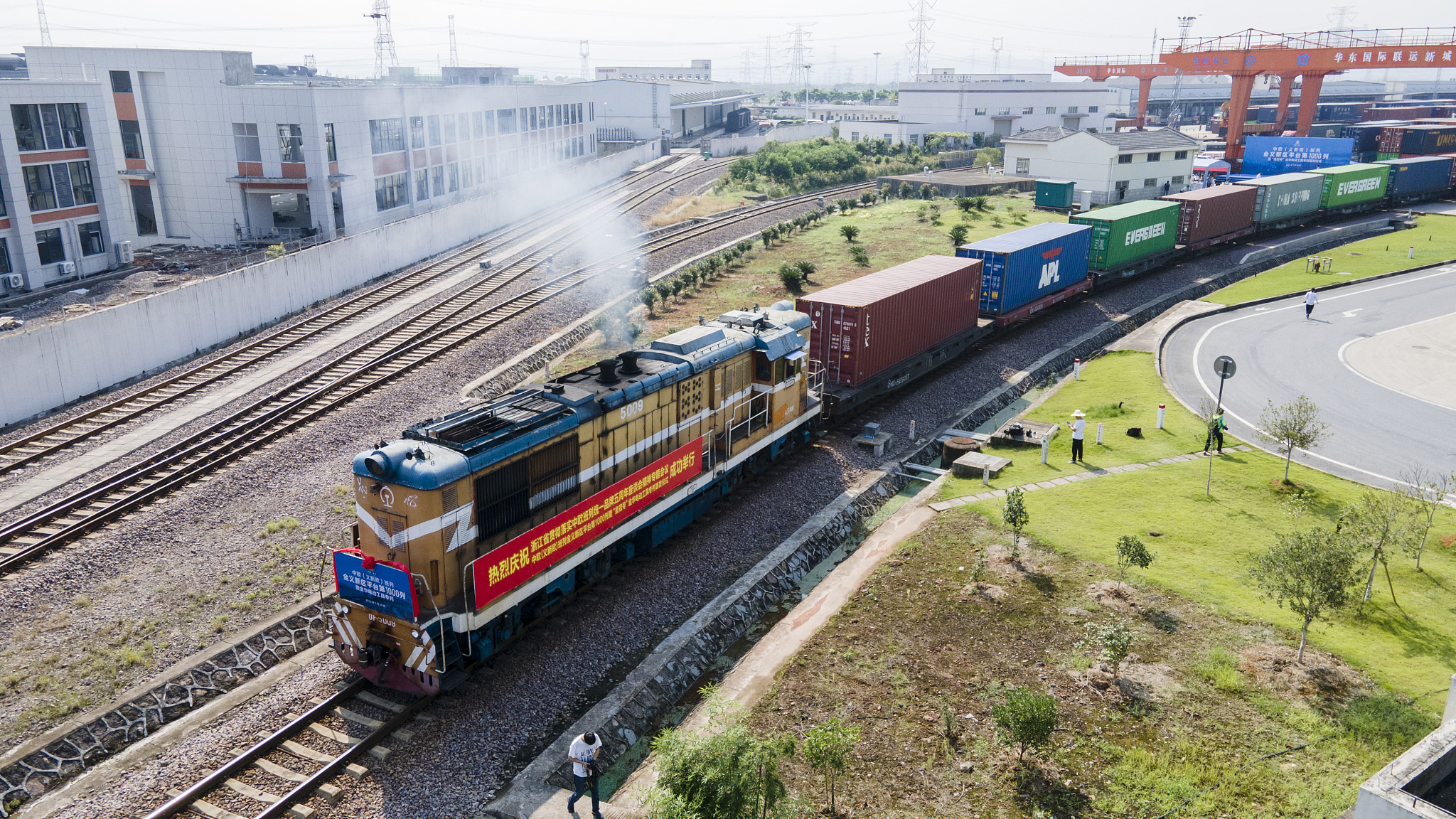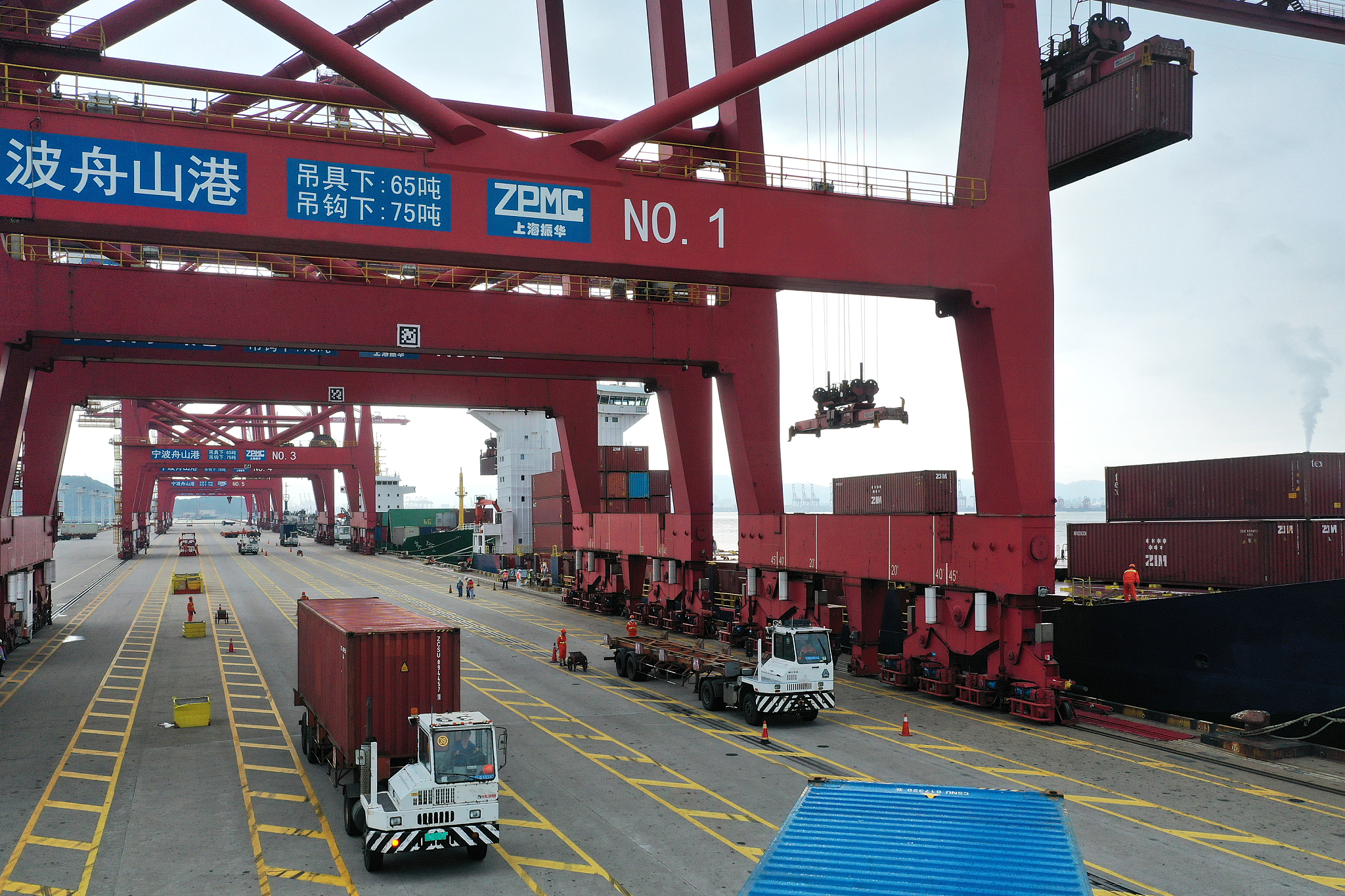
The China-Europe express train is launched, July 29, 2021. /CFP
The China-Europe express train is launched, July 29, 2021. /CFP
Editor's note: Alexander Ayertey Odonkor is an economic consultant, chartered economist and a chartered financial analyst with a keen interest in the economic landscape of countries in Asia and Africa. The article reflects the author's opinions and not necessarily the views of CGTN.
In 2013, the recreation of the ancient Silk Road established during the Han Dynasty about 2,000 years ago was proposed. The Silk Route is the world's oldest trade route that connected China and the Far East with the Middle East and Europe.
Today, through the Belt and Road Initiative (BRI), a global infrastructure development project which is made up of two main components; the Maritime Silk Road Initiative (MSRI) and the Silk Road Economic Belt (SREB), China is recreating the Silk Road by collaborating with other countries to build adequate infrastructure such as roads, ports, railroads, industrial parks, airports, dams, pipelines, real estate and soft infrastructure such as free trade and investment agreements. By bridging the infrastructure gap, the BRI has become central to global urban development as this initiative is creating job opportunities in urban areas, alleviating poverty and enhancing urban land development.
Recent data from the World Bank suggest that 4.2 billion people live in cities around the globe; this represents about 55 percent of the world's entire population. As the world's urban population is expected to reach 6 billion by 2045, policymakers are presented with a daunting task.
What is the challenge? Simply put, policymakers are expected to provide adequate infrastructure that spans the transportation system, energy, housing and other basic amenities to meet the growing demand of the urban population. Cities contribute over 80 percent of the global gross domestic product (GDP); as a central point for economic activities, these urban areas attract millions of new residents every year.
It is therefore imperative for policymakers and relevant stakeholders to build appropriate infrastructure to meet the growing demand of the urban population. In fact, achieving this goal will be far from a walk in the park as there are currently close to 1 billion urban poor people living in informal settlements. However the BRI is augmenting the efforts of governments to bridge the infrastructure gap in cities and enhance inclusive growth; by building hard infrastructure such as railroads, ports, roads, dams, real estate, pipelines, etc., these facilities are creating new job opportunities, alleviating poverty and promoting economic progress around the world.
According to a report (2019) by the global economic consultants Cebr and sponsored by the Chartered Institute of Building (CIOB), the BRI has a considerable impact on the global economy; stimulating economic growth in over 20 major economies and each of the world's 10 regions. A detailed account shows that the BRI will bolster the global GDP by more than $7.1 trillion per year by 2040; thus the world's GDP growth is forecast to be boosted by 0.2 percent per year from now to 2040.
While 56 countries are projected to add more than $10 billion to their national GDP as a result of BRI, China which will be the world's largest economy by far in 2040 will also benefit significantly. Although the United States is not participating in the BRI, it will experience a boost in GDP of 1.4 percent as a result of the BRI; while this share appears to be smaller than that of most major economies, the absolute boost of the United States economy is only second to China.

The 17th International container line of "One Belt and One Road" at Dapukou Container Terminal of Zhoushan Port in Ningbo, Zhejiang Province, July 10, 2021. /CFP
The 17th International container line of "One Belt and One Road" at Dapukou Container Terminal of Zhoushan Port in Ningbo, Zhejiang Province, July 10, 2021. /CFP
Again, countries participating in the BRI are experiencing a reduction in trade cost which is increasing the volume of trade in such countries. Excerpts from a World Bank report (2019) shows that as a result of the BRI, trade volumes have increased significantly in participating countries; this is partly because trade costs have reduced significantly in these countries.
For example in Pakistan the development of the port of Gwadar connections, through pipeline, railroad and highway which constitutes a part of the China-Pakistan Economic Corridor has increased the import of agricultural goods, textiles and several other products. Conversely, Pakistan's exports have also increased significantly; this is largely attributed to the lower cost of imported inputs and higher demand from abroad. Other infrastructure projects such as the Peshawar-Karachi motorway, the reconstruction of a railroad to link Karachi and Peshawar have enhanced mobility, reduced the cost of trade and improved economic activity significantly in Pakistan.
Furthermore in Pakistan and other BRI participating countries, BRI investments are creating jobs which are lifting millions of people out of poverty. For instance in South Asia, which is home to the second largest population of poor people after sub-Saharan Africa, BRI infrastructure investment will create employment for more than 4 million people in the agriculture sector by 2030; while South Asia will benefit from significant reductions in poverty the largest share will be experienced in Pakistan where 1.1 million people will be lifted from extreme poverty.
Although BRI investments are estimated to lift 34 million people from moderate poverty and 8.7 million people from extreme poverty, non-participating countries in the BRI will also experience extreme poverty reduction of 3.7 million people by 2030.
Clearly, the BRI has proven to be essential for bridging infrastructure gaps, promoting inclusive growth, alleviating poverty and bolstering economic growth. In spite of all these benefits, the impact of the BRI could be increased considerably if more countries fully participate in this global infrastructure development project.
(If you want to contribute and have specific expertise, please contact us at opinions@cgtn.com.)

